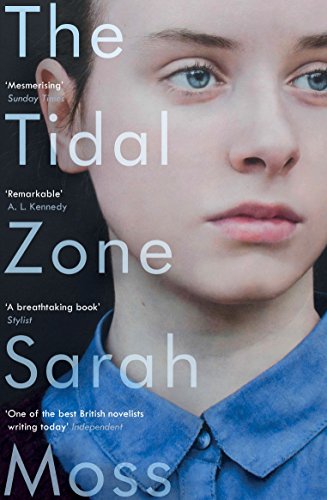4 Stars
2020 was my year for reading Maggie O’Farrell; 2021 is becoming my year for reading Sarah Moss. After being impressed with her Ghost Wall and Summerwater, I thought I’d read one of her earlier novels.The novel’s narrator is Adam Goldschmidt, an underemployed academic and stay-at-home dad. His wife Emma is a chronically stressed, overworked, and exhausted doctor so Adam is the primary caregiver to 15-year-old Miriam and 8-year-old Rose. When not taking care of the household (shopping, cooking, cleaning, doing laundry) and the girls’ activities, he is writing a guidebook on the post-war reconstruction of Coventry cathedral.
One day Miriam collapses at school. She is revived and hospitalized for a time to determine why a healthy teenager would suffer cardiac arrest. Since the cause cannot be determined, the family has to adapt to living with the possibility that Miriam might again stop breathing at any time. The book focuses on life’s impermanence and learning to live with that uncertainty: “how can we live once we have understood that any or all of us may be killed while tying our shoes or going up the stairs? While reading a novel, or writing one?”
Miriam must face the possibility of death but the novel focuses more on Adam’s reaction to “the new reality in which death stood in the corner of every room and came to breathe over my shoulder whenever I took my eye off him.” As expected, he worries and struggles not to be overprotective but to give Miriam “her own tidal zone.” Like the parents of a newborn, he regularly checks that his daughters are breathing. Miriam has had a brush with death and their safe world has been shattered, but a parent’s daily responsibilities continue: “Everything is paused, except that Rose still needs to go to school and to eat her meals, and the laundry must still be done and the bathroom cleaned.”
Adam finds some comfort in being part of a global web of suffering parents: “It is normal for children to die. Look at Syria, at Palestine, at Eritrea and Somalia. Look at the tidelines of beaches in Italy and Greece. Look, while we’re on the subject, at certain parts of Chicago and Los Angeles.” He tells Emma that “’the way things are for us now is the normal one, globally and historically. It’s everyone else who’s anomalous. Everyone who doesn’t think it could happen to them. . . . It comforts me to think that most parents in most of time and most of the world have lived with this fear as a matter of course.’”
The message is that we are all fragile and though we should acknowledge the possibility of sudden death, we should not let it dominate our lives: “there is death and suffering and evil” but “there is beauty” too. Though we should appreciate life and health and life’s ordinary extraordinariness, “May we forget. It is a pity that the things we learn in crisis are all to be found on fridge magnets and greeting cards: seize the day, savour the moment, tell your love – May we live long enough to despise the clichés again, may we heal enough to take for granted sky and water and light, because the state of blind gratitude for breath and blood is not a position of intelligence.” We must continue living because “’You can’t go round not loving things because they’ll die.’”
Interspersed with the family narrative are two other stories of rebuilding and moving forward after a catastrophe: we learn how Coventry cathedral was designed and reconstructed after being bombed during World War II and about Adam’s father’s life in the U.S. after his Jewish parents “crossed the seas to escape bad times.”
Readers in England will undoubtedly note the many criticisms of the National Health Service, the publicly funded healthcare system. Emma comments that the NHs is so stretched that “’the only people who get treatment are the ones who aren’t safe’” and “’the whole system is now running on the last dregs of the goodwill of burnt-out doctors.’” Adam notes the injustice “that we are all in a country that pays young women more to impersonate elves in a shop than to give expert care to critically ill children.”
The book shows role-reversal parenting. It is the woman who is the workaholic who is usually home late and even when home is working. Adam is usually the only father dropping off and picking up a child at school, and faces challenges because of his gender. For example, he takes Rose to a swimming pool for a birthday party and has to rely on the help of another woman: “the father of daughters too young to be sent alone into the women’s changing room . . . must take them with him into the men’s room. Even stay-at-home dads who know how to use the delicates cycle on the washing machine and clean a toilet before it needs doing can’t go into the women’s changing room. The power dynamic between small girls and a room full of naked men is not . . . the obvious way round.” When he waits in the lobby and watches the pool to make certain Rose has come through the changing room to the pool, he is told, “’Some of the mums don’t think it’s right, a man standing there watching the kiddies like that.’”

No comments:
Post a Comment